

Damion Smy
GWM Cannon Alpha ute, Tank 300 HEV and Tank 500 recalled
14 Hours Ago
Does the Ford Everest still make sense without the sought after V6 diesel? See how it fared after over four months of testing.
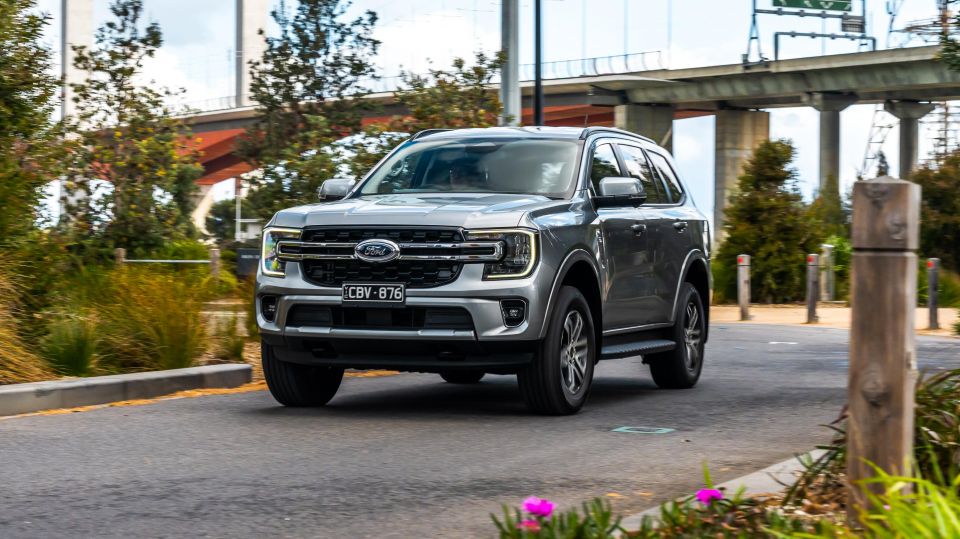
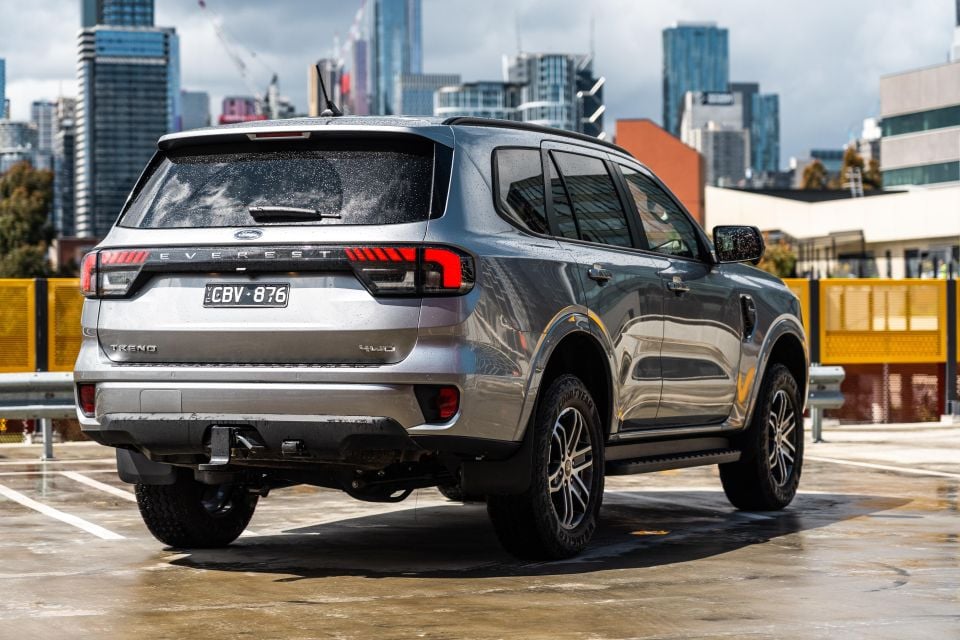

Quickly see how this car stacks up against its competition. Select any benchmark to see more details.
Where expert car reviews meet expert car buying – CarExpert gives you trusted advice, personalised service and real savings on your next new car.
The current-generation Ford Everest body-on-frame SUV has been on sale in Australia for well over 12 months now, and there’s still plenty of demand for the V6 turbo-diesel variants.

There is also a wide range of Everests with the four-cylinder bi-turbo diesel engine offered and these are more likely in stock. This includes the mid-specification Trend 4WD variant on test here.
The 2024 Ford Everest Trend 4WD is technically the most expensive variant in the four-cylinder bi-turbo diesel line-up. It’s also available with a wide range of optional packages that can bring the asking price eerily close to the better-specified Sport V6 4WD.
As recently detailed, Ford is increasing the pricing for the entire Everest range for vehicles produced from January 1, 2024. Pricing is up by $2490, depending on the variant, with no corresponding specification changes.
Read along to find out how the Everest Trend 4WD fared over four months and well over 3000km of CarExpert testing.
The Ford Everest range currently starts at $53,490 before on-roads for the Ambiente 4×2, and extends all the way to $78,530 before on-roads for the flagship Platinum. A full breakdown of pricing is further down.
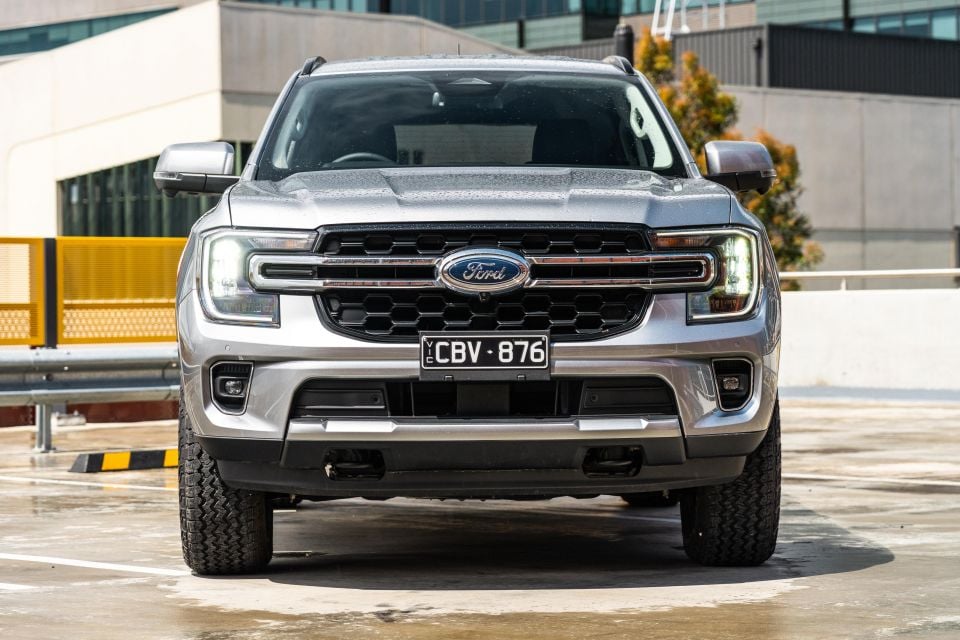
Our tester is a mid-specification Trend variant with the full-time four-wheel drive system. This model currently starts from $66,790 before on-roads.
It was fully optioned; though, with the $2300 Touring Pack, the $700 Trend Premium Seat Pack, as well as the $500 All-terrain Tyre pack. The tester was also finished in the Aluminium exterior paint colour which is an additional $700.
This brings the total asking price for our Everest Trend 4×4 tester to $70,990 before on-roads, or $77,755 drive-away for Victorian buyers (each state has slightly different taxes).
2024 Ford Everest pricing:
All prices are before on-road costs
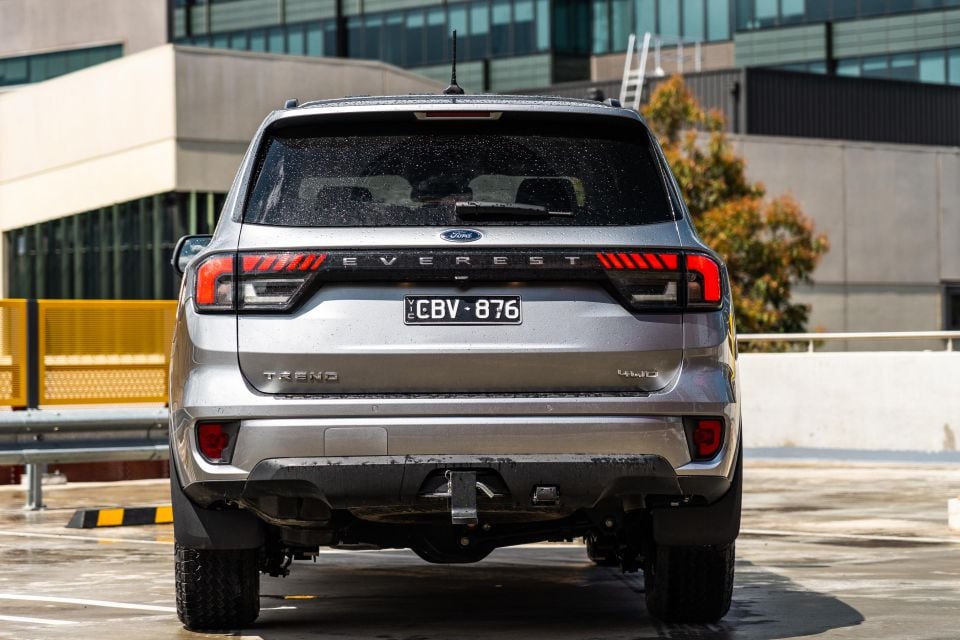
In terms of similarly priced three-row SUV rivals, this fully optioned Everest Trend is priced up against a number of larger unibody three-row SUVs.
Key rivals include:
An exception to this rule is the Toyota Prado which in mid-spec GXL guise starts from $69,530 before on-roads. Our tester is notably more expensive than other seven-seat ute-based SUVs including the likes of the Isuzu MU-X, Mitsubishi Pajero Sport, SsangYong Rexton, as well as the Toyota Fortuner.
Buy your new car without the stress. It's fast, simple and completely free.

Great service from Travis and team, second time I have used this business would not hesitate to recommend them to anyone
Craig C.
Purchased a Ford Ranger in Sunshine Coast, QLD
CarExpert helped Craig save thousands on his Ford Ranger, now let us save you on your next new car.
Find a dealGetting into the Everest Trend is made easier by a set of side steps (fitted as standard) as it’s a fair way up. Once in I found I had to wiggle around a bit to get comfortable in the driver’s seat.
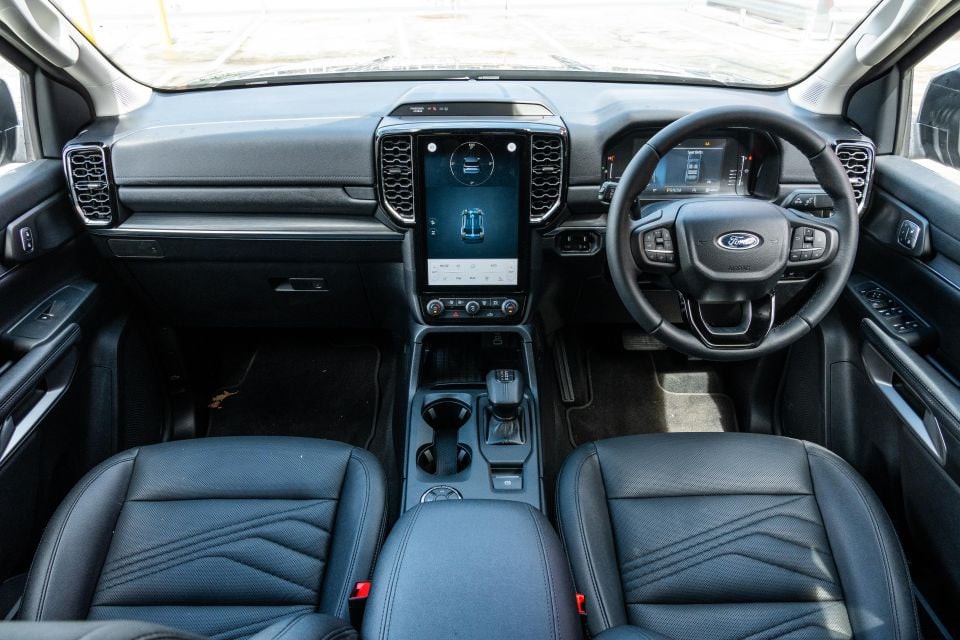
All seats in the Everest Trend are finished in a black leather-accented upholstery as standard, though our tester was fitted with the optional Premium Seat Pack that adds perforations to the first- and second-row seats.
This optional package also adds 10 ways of electric adjustment for the driver’s seat, eight ways of electric adjustment for the front passenger’s seat. The front seats are also heated and ventilated.
The driver’s seat is extremely comfortable with plenty of side bolstering holding you in place. The headrest is really soft and supple too.
I was able to get my driving position dialled in perfectly thanks in part to the how much thigh support there was. I felt a little like I was in a clamshell, in the best way possible.
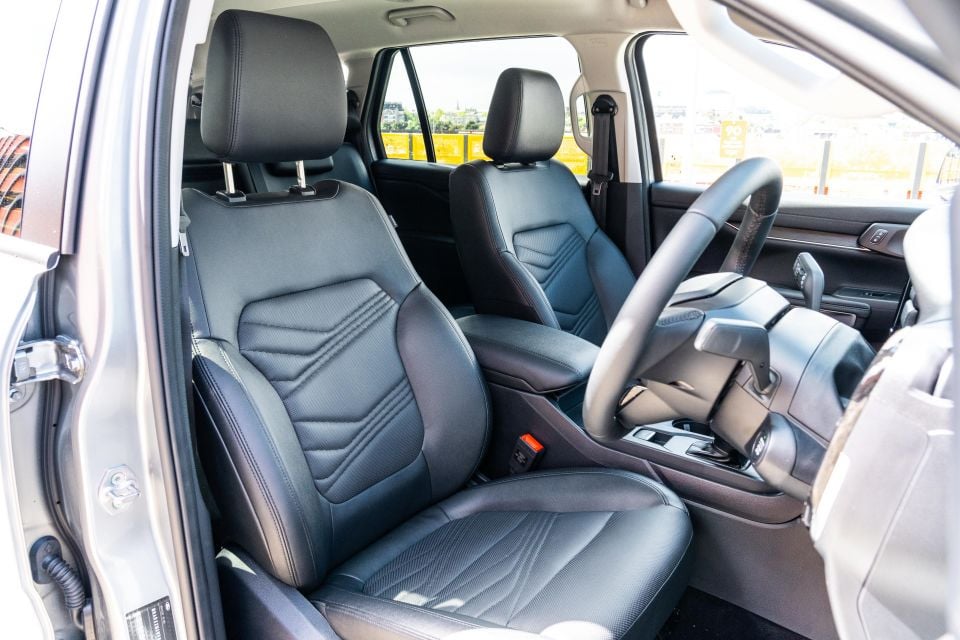

This driving position was helped by the decent tilt and reach adjustability of the Everest’s steering column. I have long legs and a shorter torso which typically means my knees hit the steering column and I have to stretch to reach the steering wheel.
The Everest Trend comes with a leather-wrapped steering wheel which feels nice in the hand. The leather is not quite as buttery soft as some higher-spec Everest variants; though it’s still nice enough.
Just like the Ranger, the Everest’s steering wheel buttons are a little ‘spongey’ but the rocker switches have a precise and firm feel.
Ahead of the driver is an 8.0-inch digital instrument cluster that’s incredibly configurable, yet a little on the smaller side.
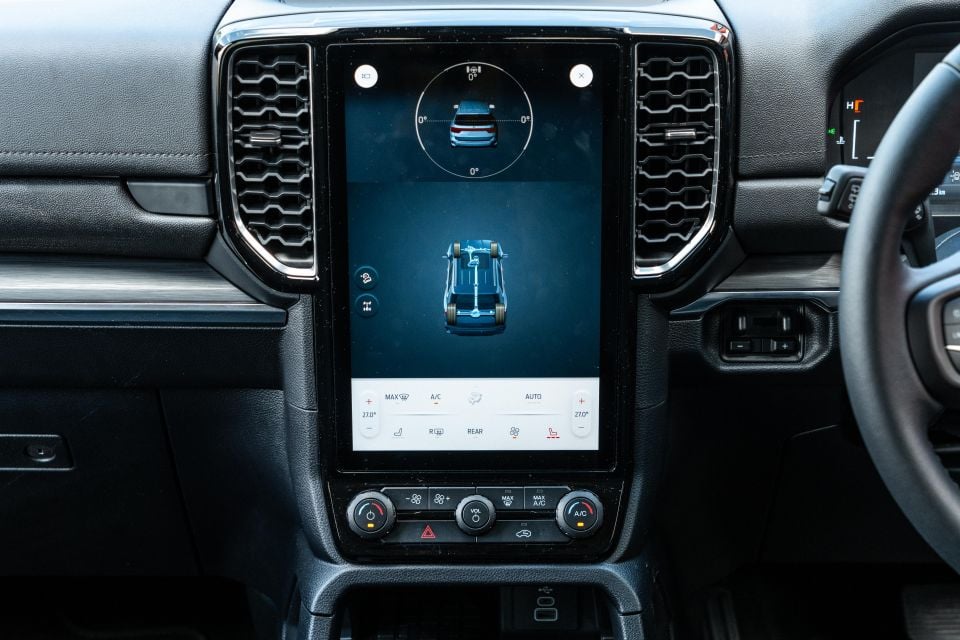
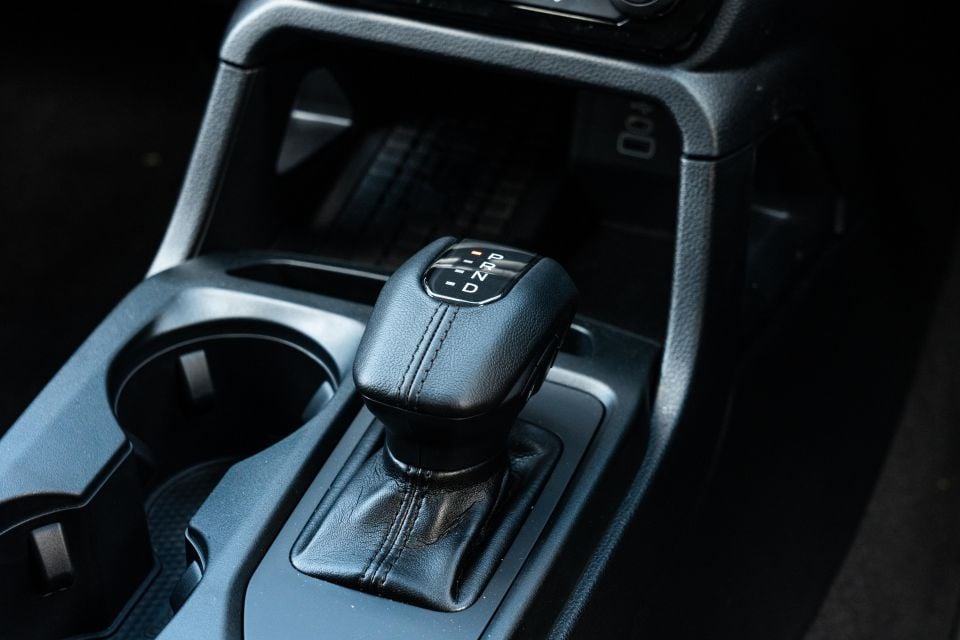
Although you miss out on the full 12.4-inch digital instrument cluster (for which you need to purchase the flagship Platinum) the 8.0-inch unit looks better than traditional dials, with a tiny screen sandwiched between them. It still tells you all the critical information you need to know.
Moving across the dash, the Everest Trend receives the larger 12.0-inch portrait-oriented touchscreen infotainment system, which looks very high-resolution but is an absolute fingerprint magnet. There’ll be even more smudgy fingerprints if you find the ‘Sketch’ section too.
Compared to the smaller 10.1-inch touchscreen, this larger unit seemed to lag a little more upon start-up or when loading new pages. Ford has since introduced a new software update that’s rolling out to all Rangers and Everests that will bring a refreshed look.
Apple CarPlay and Android Auto are both available via wired and wireless connections. You can change between two view sizes for the smartphone mirroring, with a larger squarer or smaller rectangular window. The latter of these frees up a range of shortcut buttons.

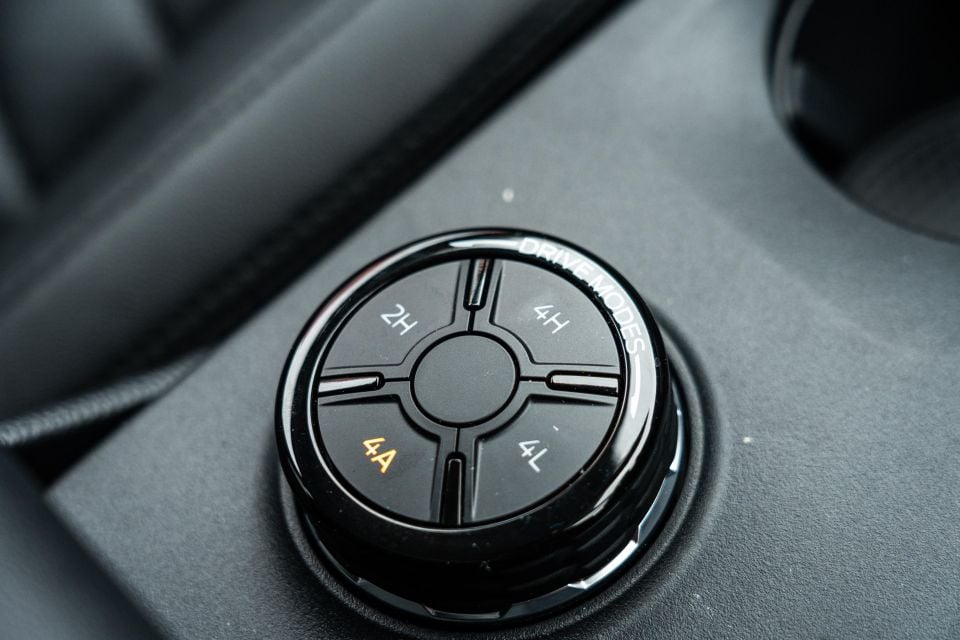
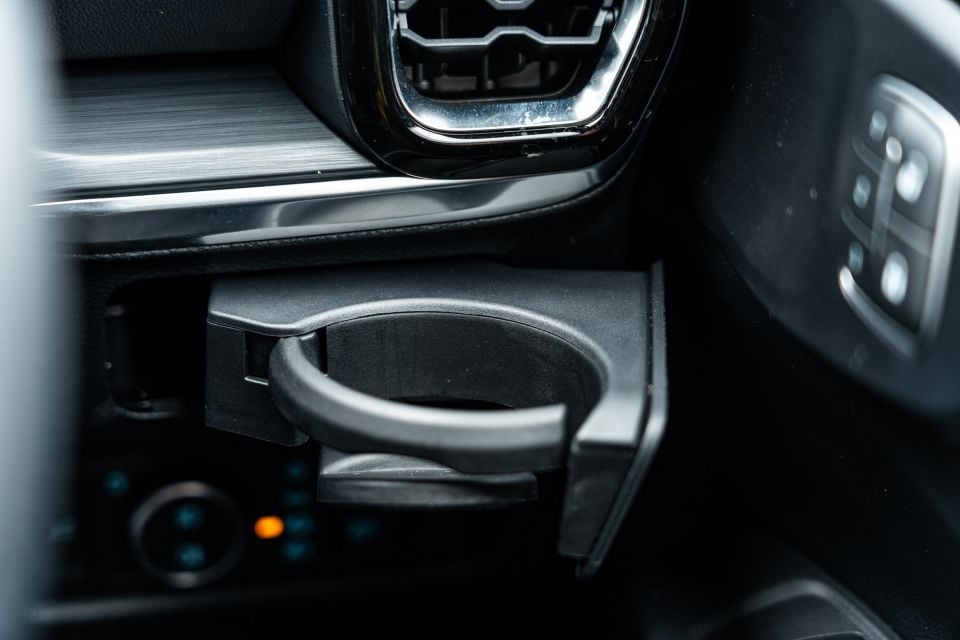
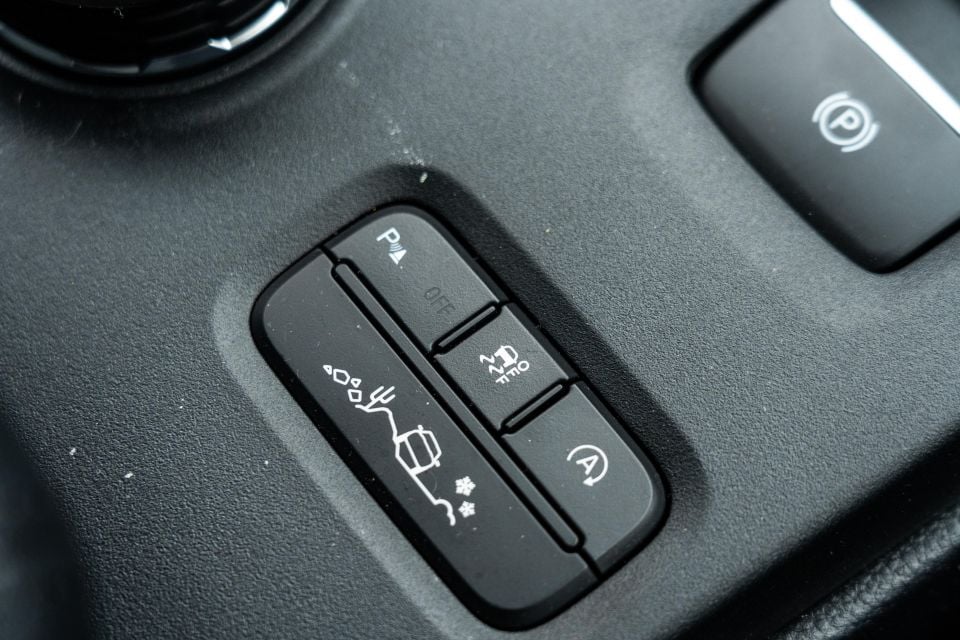
Satellite navigation comes as standard on the Everest range and it’s extremely easy to use. Searching up points of interest takes no time at all, making the process feel natural and simple.
A strange part of the Everest’s interior, like the Ranger, is the climate control set-up. Parts of it are integrated into the touchscreen, whereas the other parts are physical buttons and knobs.
There’s a weird double-up of the temperature controls; they’re able to be adjusted either by physical dials or by tapping the screen. I still don’t really see the point of having both…
Around the cabin of the Everest Trend there is a mixture of both softer and harder plastics. Thankfully, softer stuff is around high-traffic touch points like the armrests and the main section of the dashboard.
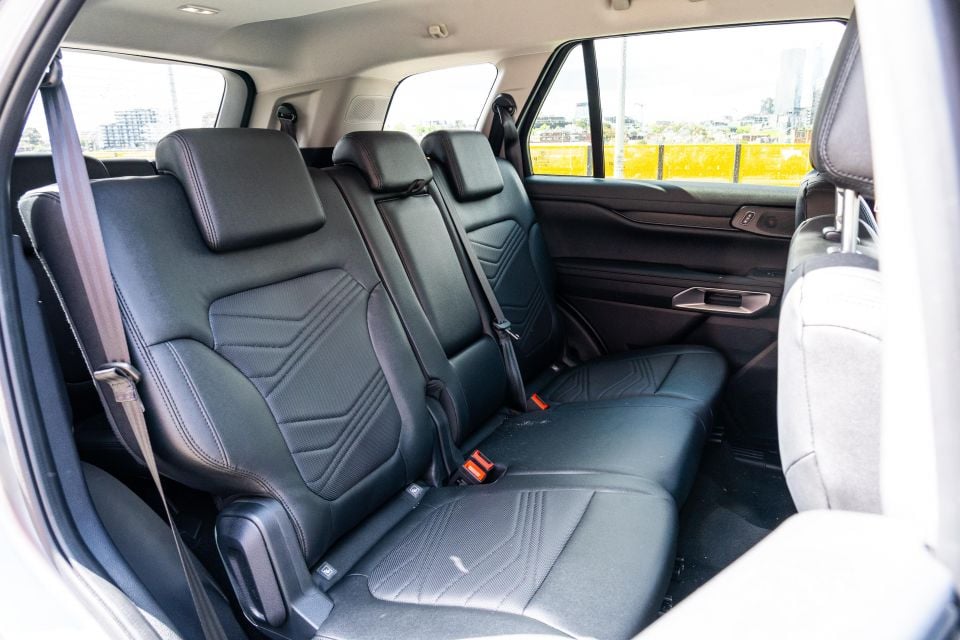
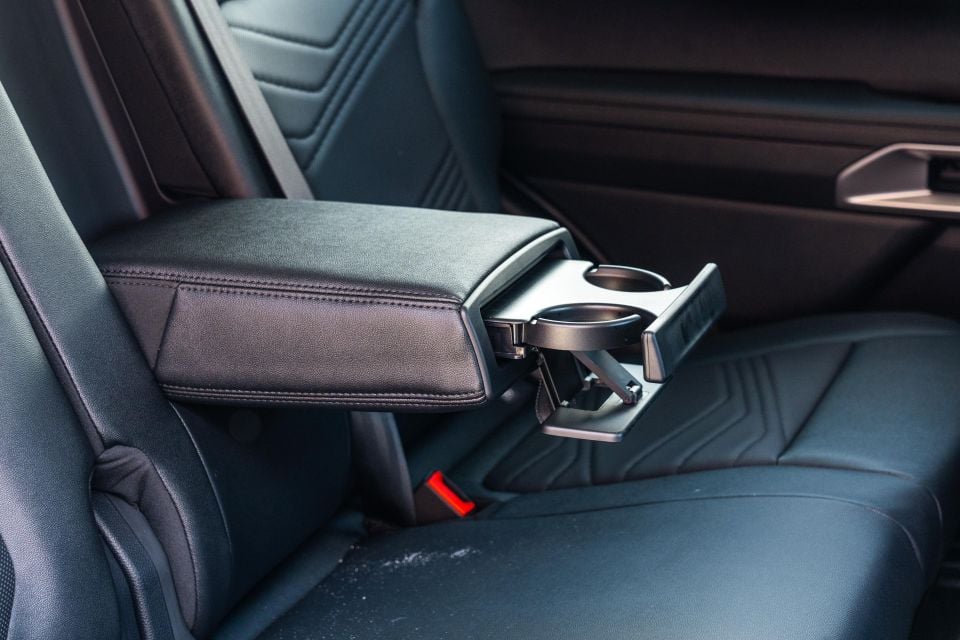
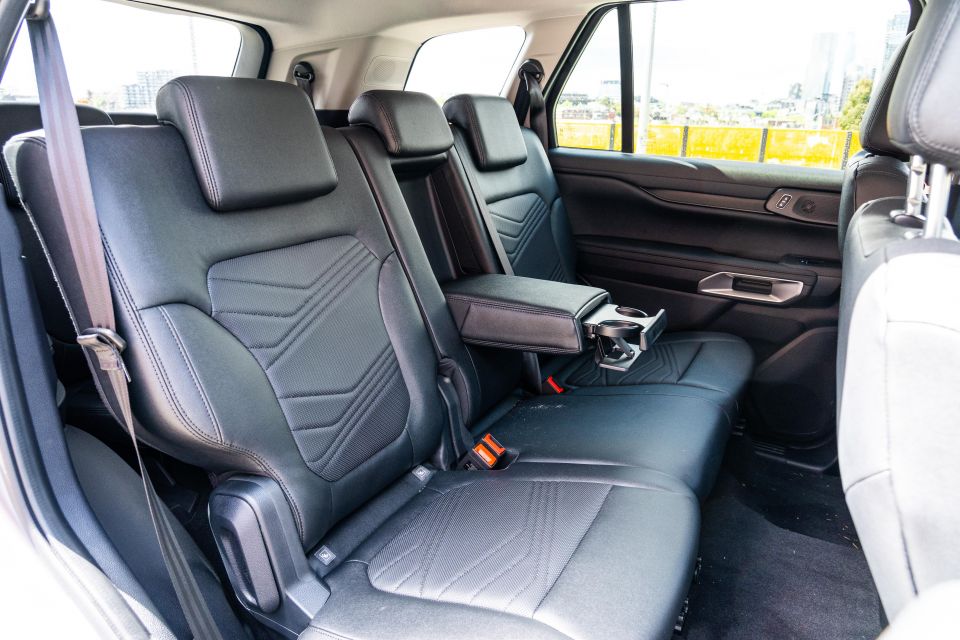
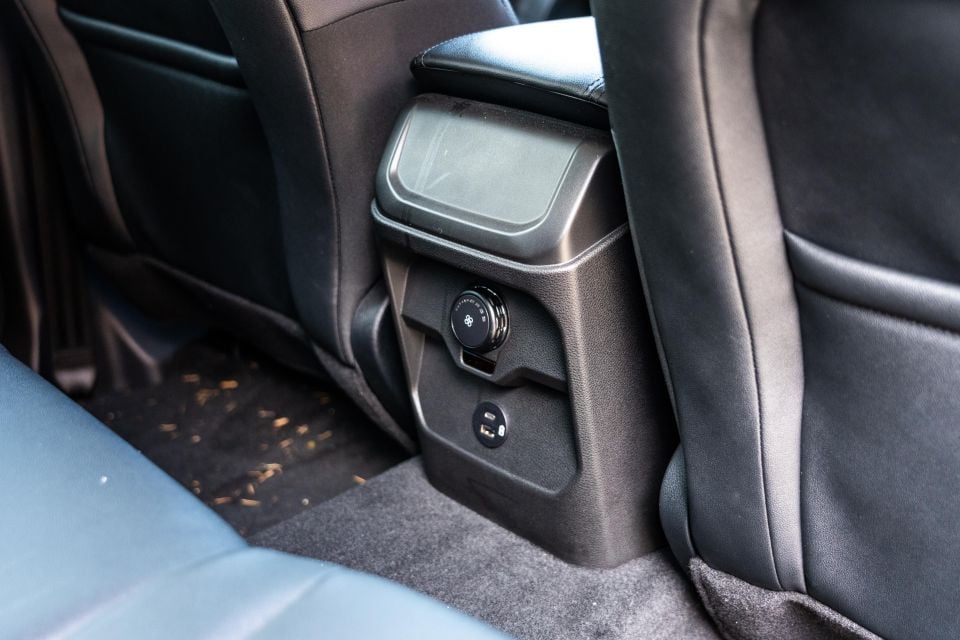
You don’t have to stray too far away from the armrests to find harder plastics, however.
The Everest Trend comes with: tradie-style cupholders that are mounted on the dashboard; an upper glovebox; and a wireless phone charger. There’s also the e-shifter that’s a little hard to gauge which gear you’re in when using. It’s intuitive as a regular conventional gear shifter, though.
Moving to the second row there’s a noticeable step down in terms of quality. The seats don’t feel quite as comfortable as the ones in the first row; although, the door and fold-down centre armrests are still soft.
The second-row seats both slide and recline which allows second-row passengers to relax, or to maximise cargo capacity.

At a leggy 182cm I expected a little more space in the second row, as I needed to splay my legs around the driver’s seat in order to sit comfortably. There was still enough head and shoulder room though.
In terms of second-row amenities there are thankfully a set of grab handles to allow for easier ingress and egress, a separate blower control with roof-mounted air vents, and a 12V socket.
Trying to get into the Everest’s third row is a mission in itself. These seats should be considered an emergency, kids-only space because there’s no knee, head or shoulder space for adults.
The armrests are absolutely rock hard and there’s an awkward cupholder space on each side of the car.
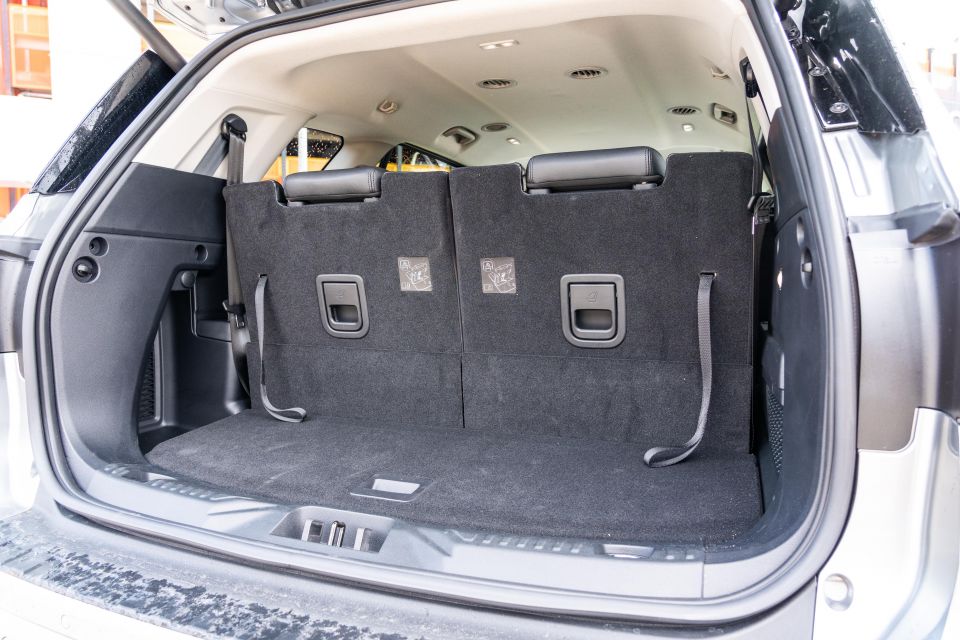
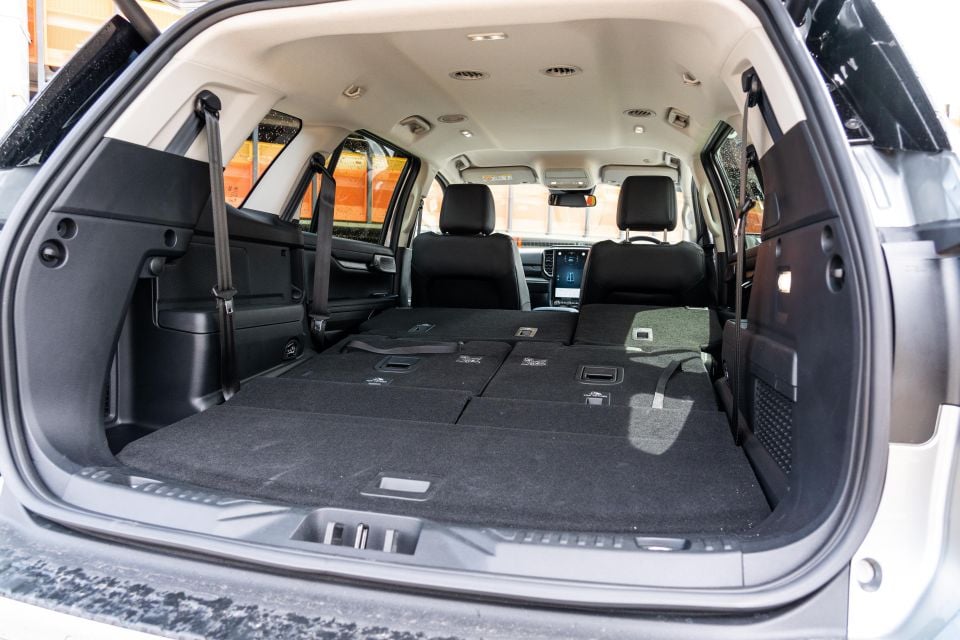
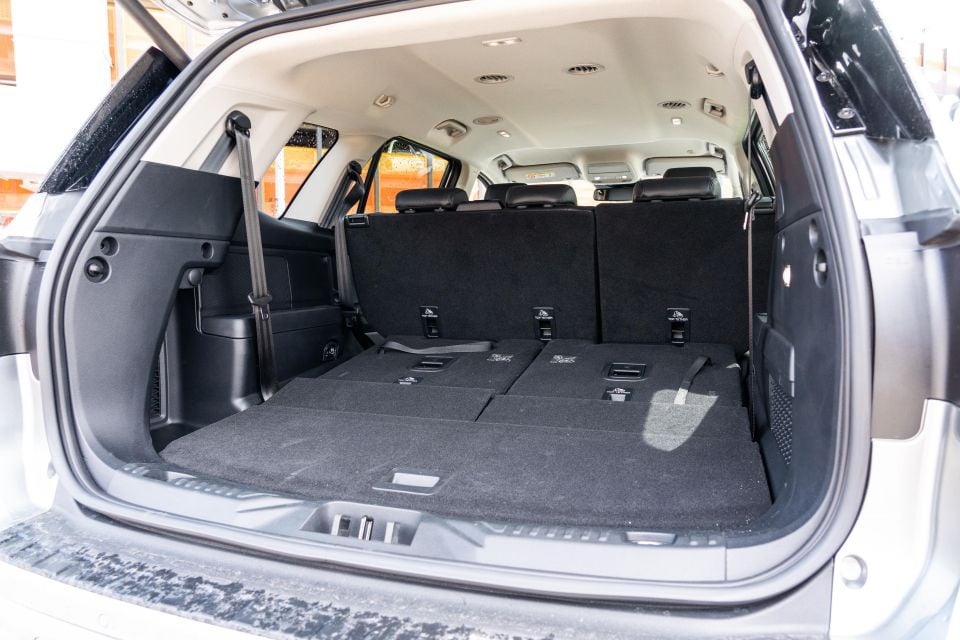
In terms of boot space with the third row of seats upright, there’s 259 litres of boot capacity – and it’s actually fairly usable. This expands to a generous 898 litres with the third row folded away, and an almost van-like 1823 litres with the second and third rows of seats folded.
Other little storage nooks include a small space off to the left-hand side of the boot, as well as a small covered section under the boot space where the tools that lower the full size spare wheel are kept. It’s worth noting the Everest doesn’t come with a load cover – which means you’ll need to be careful what you have in the boot because it will be on display for everyone who walks past.
The Everest Trend comes with a power tailgate as standard. It should really be standard across the range. One last thing to mention about the Everest’s interior is the boot is incredibly well lit up with a light on the right-hand side and another mounted on the tailgate. I wish more cars had the latter.
The Everest Trend is powered exclusively by a 2.0-litre Bi-Turbo four-cylinder diesel engine producing 154kW of power and 500Nm of torque.

This is mated to a 10-speed automatic transmission with drive sent either to the rear wheels only or through a full-time four-wheel drive system. Our tester was equipped with the latter.
If you want the sought-after 3.0-litre turbo-diesel V6 engine you’ll need to step up to the Sport 4WD variant which starts at $72,490 before on-roads. That’s not a whole heap more than our fully equipped Trend tester.
The entire Everest range comes with a braked towing capacity of 3500kg, regardless of whether it’s two- or four-wheel drive. Maximum unbraked towing capacity is 750kg.
Claimed combined fuel economy for the Everest Trend 4WD is 7.2 litres per 100km. Over almost three months of CarExpert testing we achieved an average of around 9.0 litres per 100km across a range of urban, metropolitan and highway driving.
All Everest variants come with an idle stop-start system. It has an 80-litre fuel tank and also requires AdBlue.
If you thought the Everest’s interior was like the Ranger’s, you shouldn’t be shocked to learn it drives in a similar way too.
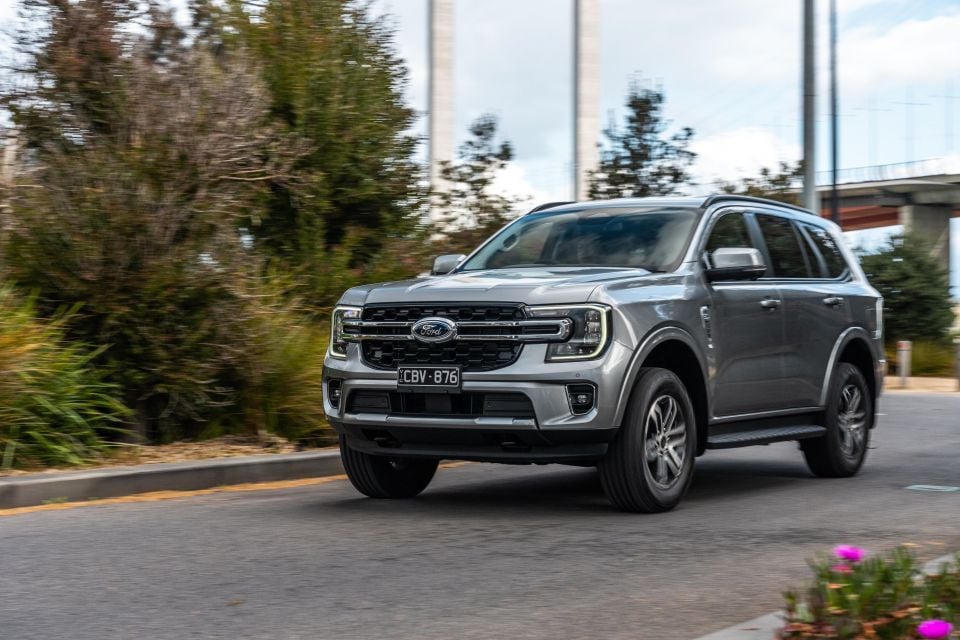
The Everest Trend’s 2.0-litre bi-turbo four-cylinder diesel engine produces healthy outputs of 154kW and 500Nm, which means it will keep up with traffic with no problems whatsoever. If you push it at the light you’ll likely pull ahead.
You will have to massage the Everest’s throttle if you need to get moving quickly; however, as stabbing the accelerator just results in turbo lag.
The entire Everest range comes with a 10-speed automatic transmission that keeps the revs in the torque band, which is between 1750 and 2000rpm.
Also just like the Ranger, the Everest’s transmission can get a little confused at low speeds and in stop-start traffic. It’s like it has too many gears to choose from.
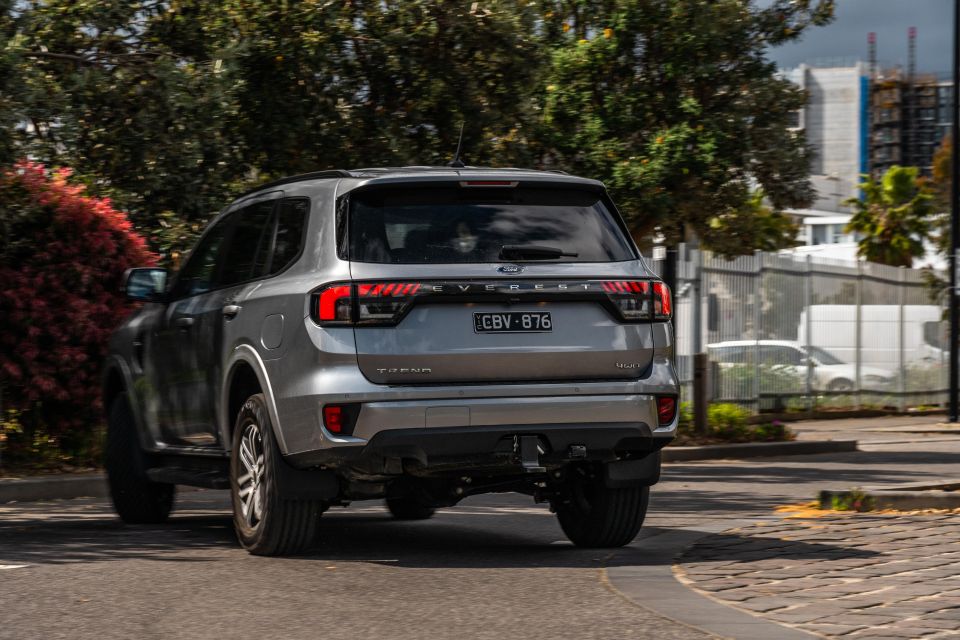
Where expert car reviews meet expert car buying – CarExpert gives you trusted advice, personalised service and real savings on your next new car.
The Everest’s steering is quite like Goldilocks in the sense it’s not too light nor too firm. In urban scenarios; however, and especially when parking, there’s no disguising how large the Everest is.
The Everest Trend typically only comes with a reversing camera plus front and rear parking sensors, but given our tester was fitted with the optional Touring Pack it adds a surround-view camera, among other features. This really helps when you’re trying to line up in a park to make sure you’re even on both sides.
Around the city the Everest is extremely compliant, though at low speeds and during parking manoeuvres, the Everest’s ute roots begin to show as there’s ever so slight rocking and swaying.
Compared to the Ranger which has leaf-spring rear suspension, the Everest receives a more passenger – and speed bump friendly – multi-link coil rear suspension setup. There’s no denying how well the Everest rides as it was tuned for Australian conditions.
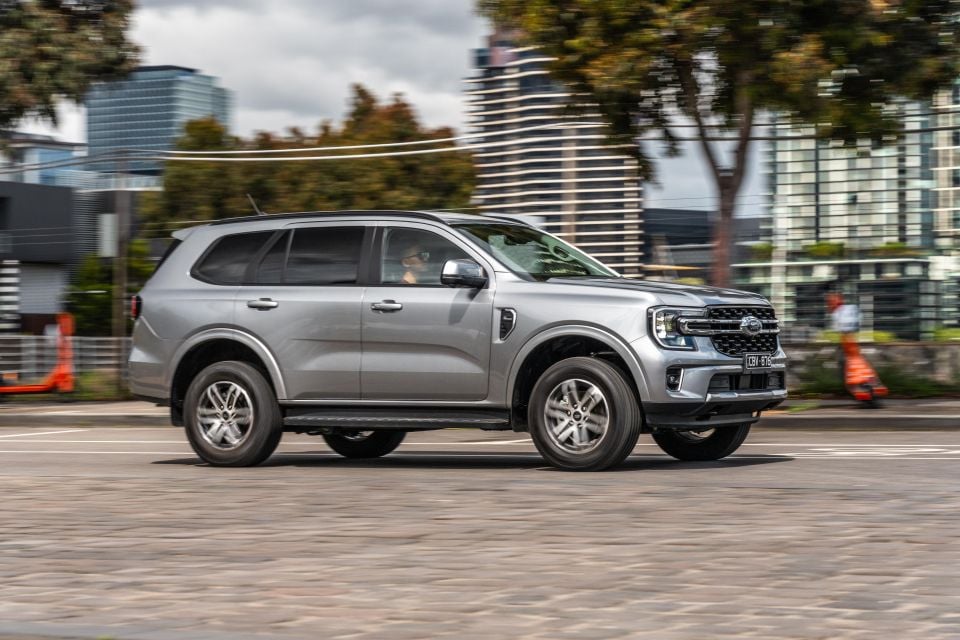
At higher speeds the Everest really finds its groove and it’s where it feels most comfortable. Driving on the highway or freeway you definitely get a ‘King of the Road’ feeling as you sit up so high.
Something to note is you need to plan your overtaking manoeuvres because this almost 2.4-tonne SUV takes some motivation accelerating to a higher speed . This will be even more apparent if you’ve got the car loaded with people, or are towing.
You’ll need to step up to at least to the Everest Sport 4WD to get the sought-after V6 turbo-diesel if you want more effortless overtaking. It produces 30kW and 100Nm more than the bi-turbo four-cylinder.
Our tester was equipped with the optional all-terrain tyres which cause a bit of tyre roar on sealed surfaces, but unlock so much more off-roading potential.
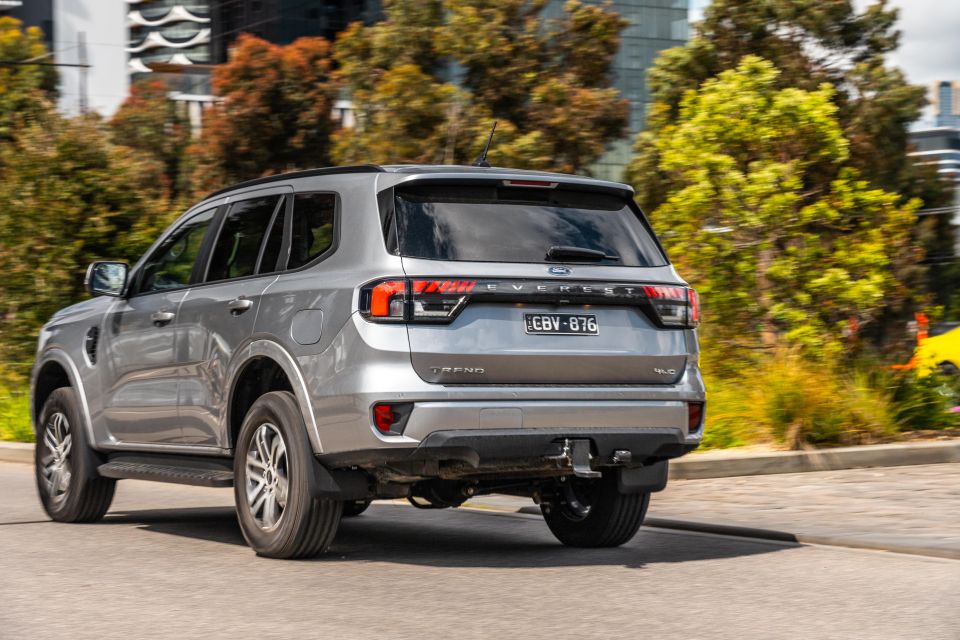
On the flip side; however, the all-terrain tyres can make the car feel a little skiddy on wet sealed surfaces, which is where the full-time four-wheel drive system comes in handy. If you spend the majority of your time on sealed surfaces I’d personally stick with the regular highway tyres.
On the safety front, the Everest Trend is pretty much fully loaded and comes with plenty of active safety equipment. Like the Ranger, the adaptive cruise control system is outstanding. Its response to vehicles is really natural as it accelerates progressively and it doesn’t overreact and brake heavily when vehicles pull in front of you.
The lane-keep assist works really well and takes a bit for it to get confused. The same goes for the lane-centring function which is really strong and correct for the most part.
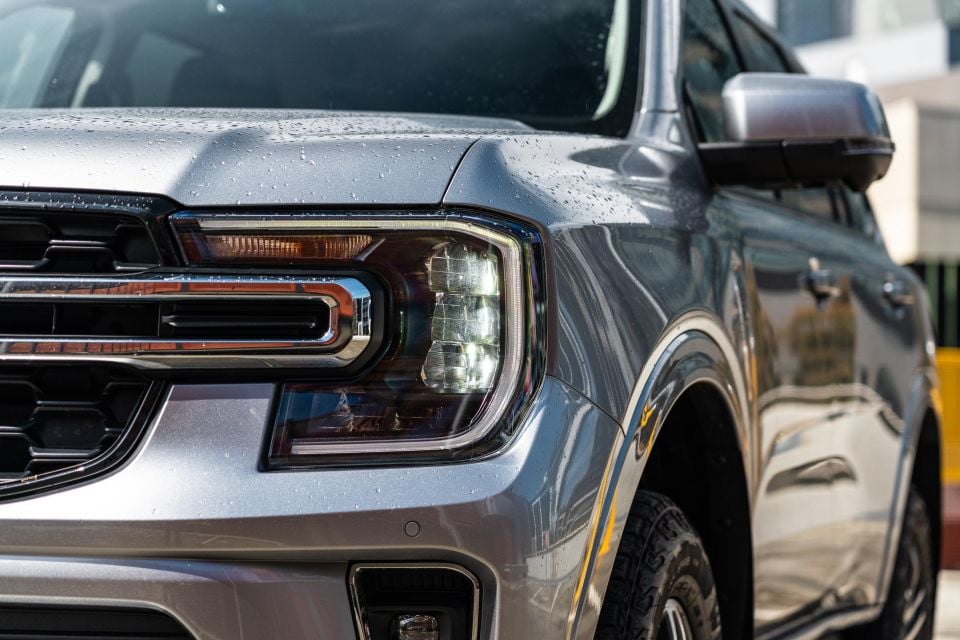

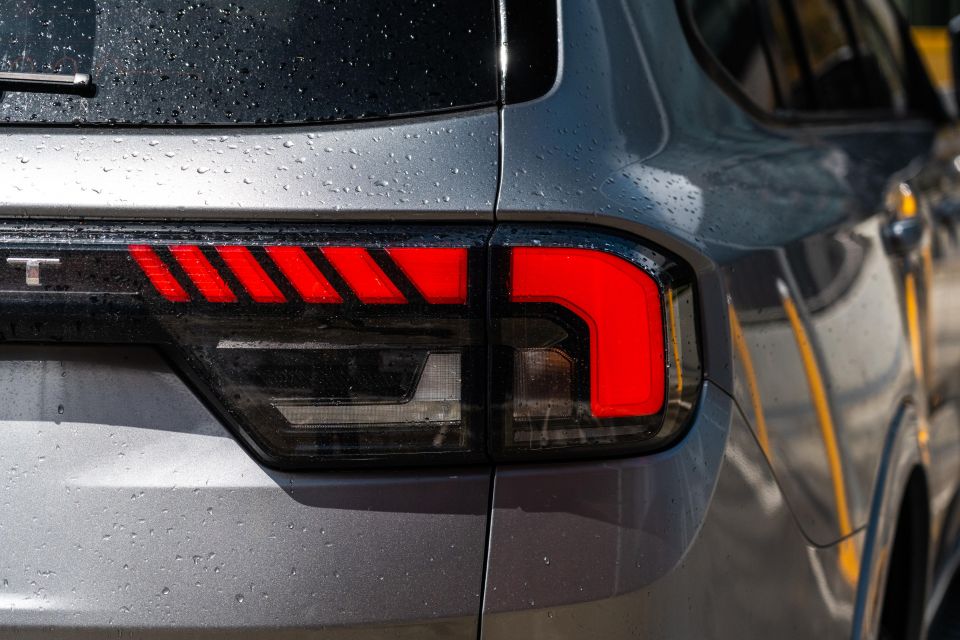

Everest Ambiente highlights:


Everest Trend adds:
The following optional extras are available on the Everest Trend 4WD:
The Ford Everest earned a five-star ANCAP safety rating against the 2020-2022 testing protocols.
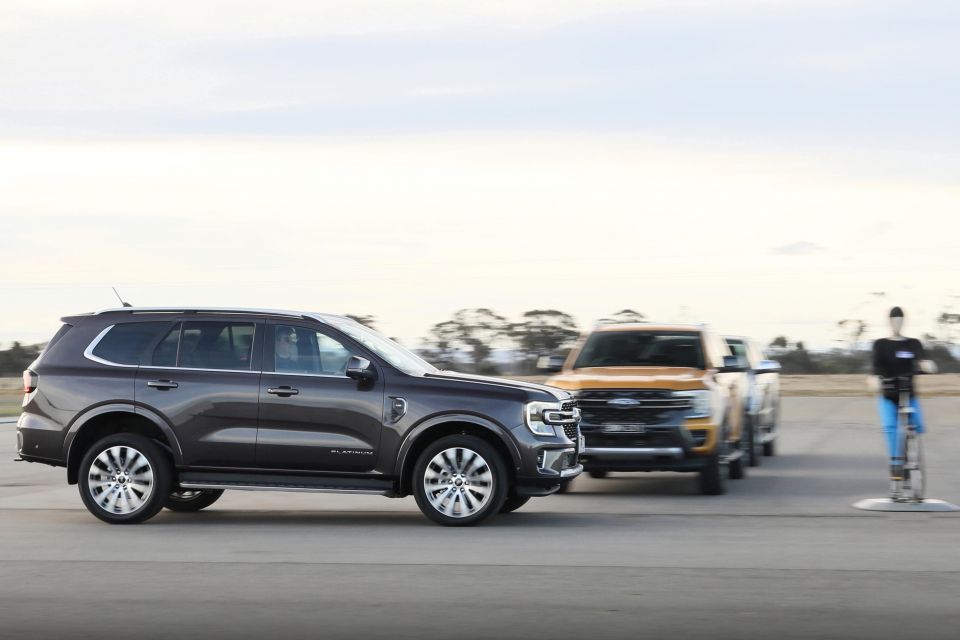
This result was based on tests carried out on the closely related Ford Ranger ute.
The Everest scored 86 per cent for adult occupant protection, 93 per cent for child occupant protection, 74 per cent for vulnerable road user protection, and 86 per cent for safety assist.
Standard safety equipment across the entire Everest range includes:
A surround-view camera is optional as part of Touring Pack on the Trend and Sport 4×4 models, and is standard on the Wildtrak and Platinum.
The Everest is covered by a five-year, unlimited-kilometre warranty, like the rest of the Ford range.
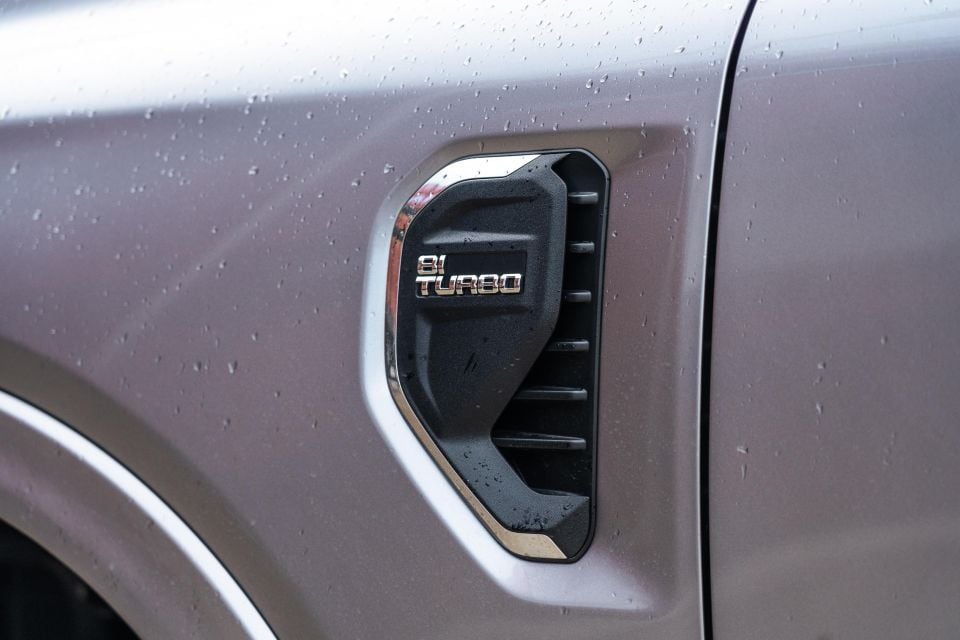
Logbook servicing is required every 12 months or 15,000km, whichever comes first.
The first four services are priced at $379, $420, $450, and $680, respectively, which is a total of $1929. Ford Australia also offers a four-year, 60,000km prepaid service plan which costs $1385 and represents a saving of $544.
The Ford Everest continues to be a benchmark in its segment; although, its pricing continues to push towards larger and plusher seven- and eight-seat large SUV rivals.
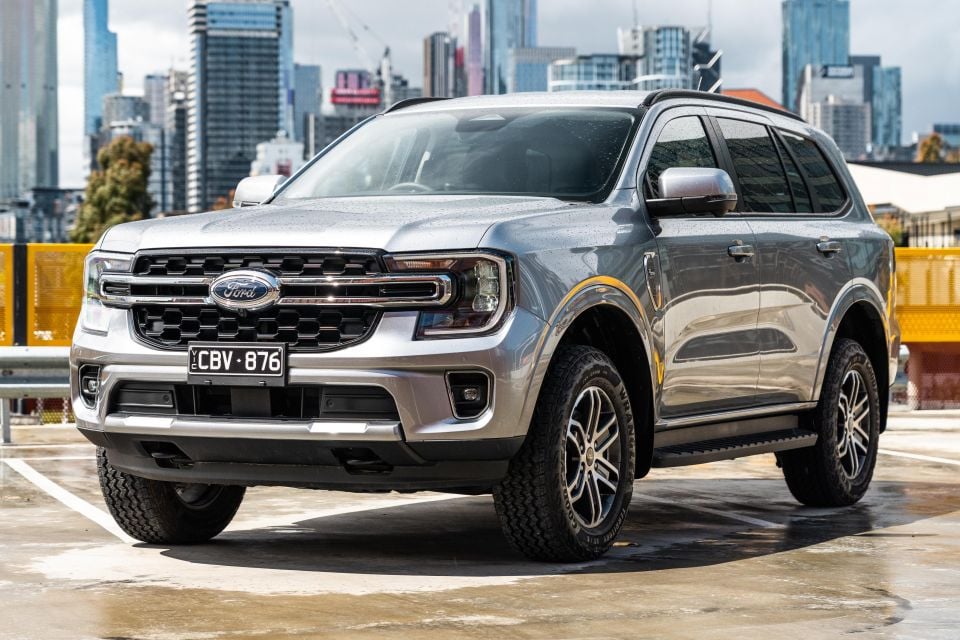
This is made more apparent the higher you step up in the Everest range.
The mid-specification Trend on test is a well-equipped variant that is a sweet spot in the range. There are quite a few option boxes you can tick; though, be prepared to pay for the privilege.
If you’re not willing to wait months for the V6-equipped Everest, this Trend variant with the four-cylinder bi-turbo engine is still really good. It produces healthy outputs and doesn’t feel slow whatsoever in everyday driving.
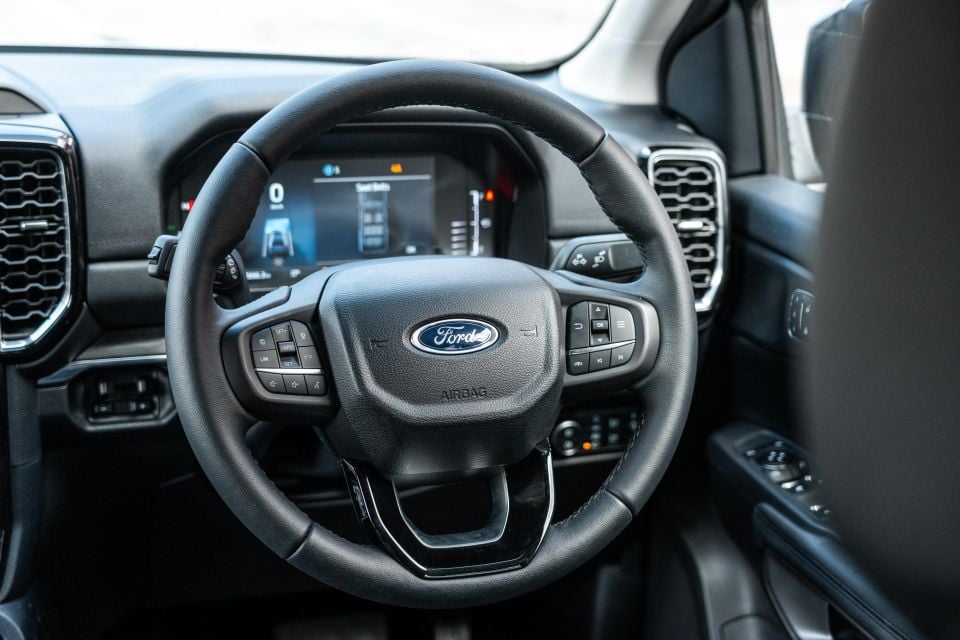
You’ll only miss the extra 30kW/100Nm of the V6 turbo-diesel if you’re towing or have the car fully loaded.
Something to keep in mind if you’re interested in getting the Everest is it’s a ute-based body-on-frame SUV that’s high riding and doesn’t offer quite the same level of on-road dynamics as a unibody large SUV.
If you spend the majority of your time on sealed surfaces I’d recommend shopping around and testing some other unibody large SUVs before putting your hard-earned cash down on an Everest.
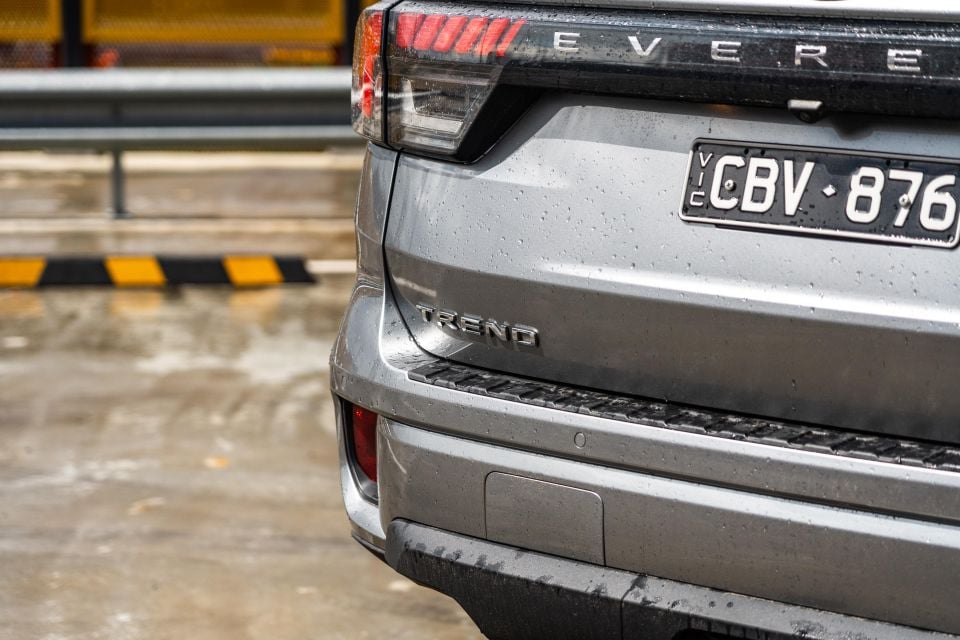
Click the images for the full gallery
BUY: Ford Everest MORE: Everything Ford Everest
Where expert car reviews meet expert car buying – CarExpert gives you trusted advice, personalised service and real savings on your next new car.
Jack Quick is an automotive journalist based in Melbourne. Jack studied journalism and photography at Deakin University in Burwood, and previously represented the university in dance nationally. In his spare time, he loves to pump Charli XCX and play a bit of Grand Theft Auto. He’s also the proud owner of a blue, manual 2020 Suzuki Jimny.


Damion Smy
14 Hours Ago


Josh Nevett
4 Days Ago


CarExpert.com.au
5 Days Ago


Damion Smy
7 Days Ago


Derek Fung
7 Days Ago


Ben Zachariah
10 Days Ago